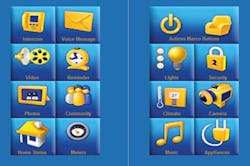Standards Update: Communications for Smart Homes Based on IEEE 802.15.4g
Smart homes do not just provide a solution for energy management; they also provide seamless interoperability and functionality between linked devices within one’s home. The Wi-SUN Alliance’s latest ECHONET-Lite specification, which is available for product development, offers a solution for fully interoperable, multiple-vendor implementations. Both the specification and test plan support enhanced functionality in devices like door locks, smoke sensors, window blinds, air-conditioning systems, and refrigerators combined with support for additional devices including smart appliances and electrical measurement devices.
Wi-SUN profiles for ECHONET Lite version 1 were published in January 2013. As a standard communications interface for ECHONET Lite, it was selected as a Telecommunication Technology Committee (TTC) standard, TTC JJ300.10. Despite its success, the alliance realized that specification had shortfalls in terms of its impact on the wider industry. As a result, the newly published specification (Wi-SUN profile for ECHONET Lite version 2) adds important features that ensure seamless interoperability and easy network deployment. In doing so, it standardizes the pairing of devices while simplifying installation and maintenance for consumers and custom installers.
By incorporating new features resulting from collaboration between the Wi-SUN Alliance (an association of companies working together to enable reliable, cost-effective, low-power, wireless utility products based on the open IEEE 802.15.4g standard) and the ECHONET initiative (a Japanese consortium of more than 100 companies), the specification allows the integration of new devices. At the same time, it is expected to raise consumer awareness of energy usage without having to connect to an electric utility. The new specification includes an encryption and authentication process between the smart meter and home energy management system (HEMS) as well as between the HEMS and home electrical appliance. These features significantly impact operational and device costs for service providers while improving quality of service for homeowners.
About the Author
Iliza Sokol
Associate Digital Editor
Iliza joined the Penton Media group in 2013 after graduating from the Fashion Institute of Technology with a BS in Advertising and Marketing Communications. Prior to joining the staff, she worked at NYLON Magazine and a ghostwriting firm based in New York.
